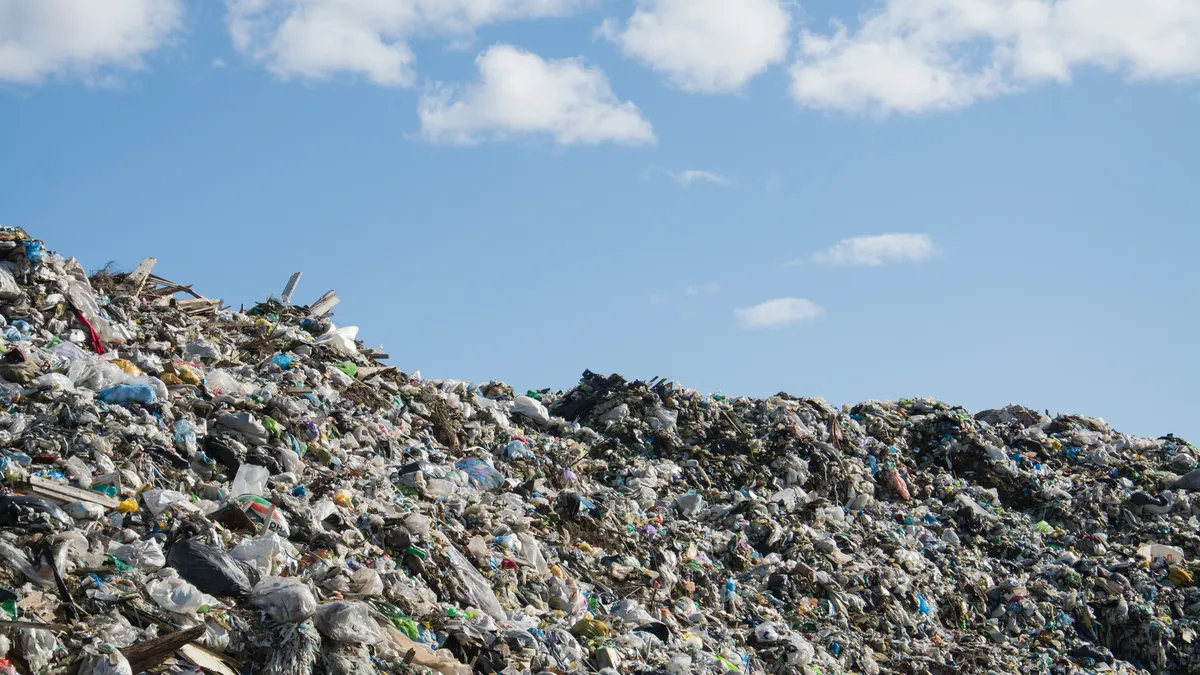Vermont has not reached the 50% recycling and composting rate goal it set in 2019, and it’s also behind on its goal to reduce overall waste by 25% by 2024, according to a report last week from the Vermont Department of Environmental Conservation.
People in Vermont are recycling and composting “slightly” more than they were in 2012, the year the state adopted a universal recycling law, but they have not decreased the amount of waste they generate or dispose, according to the solid waste report. Vermont also aims to decrease waste generation 10% by 2024.
Actions such as adopting extended producer responsibility laws for household hazardous waste and packaging, modernizing the state bottle bill and doing more to prevent PFAS pollution could get the state back on track, said report author Josh Kelly, solid waste program manager for the department.
The clock is ticking for the state to make changes, as Vermont’s sole landfill has only about 20 years of capacity left, Kelly said in the report. Volatile recycling markets, combined with contamination issues, “have increased recycling facility costs to the point where they sometimes exceed landfilling and incineration costs,” he said.
The report endorses the idea of a state EPR program for household hazardous waste, saying it would help reduce municipalities’ costs to collect and manage materials like gas cylinders, paint thinner, pesticides and cleaners that cannot be disposed of in curbside trash.
The Vermont legislature is currently mulling H. 67, an EPR for hazardous waste bill. A similar version of the bill failed to pass last year.
An EPR program for hazardous waste would put the financial responsibility of collection back on producers, thus easing the financial burdens municipalities and waste collectors face, said Paul Burns, executive director of the Vermont Public Interest Research Group, during a hearing of the House Committee on Environment and Energy on Wednesday.
“EPR programs are more than just a fundraising tool because it's important to have EPR so you have the best shot of collecting [material] and preventing improper disposal,” he said. “You don't want these things to go to the landfill.”
Municipalities in Vermont have handled these items through collection events for the past 30 or so years, but the cost for municipalities to host the drop-off events has increased by about 50% in the last five years, Kelly said in the report. It can cost a municipality between $100 and $400 per carload and an average of $1.6 million per year to manage the materials, he said in his testimony.
Vermont already has EPR programs for mercury bulbs, mercury thermostats, paint, batteries and some electronic devices like televisions and computers. Before California enacted battery EPR legislation last year, Vermont was the only state with a primary battery EPR program. Vermont recycles more batteries per capita than any other state, according to the report.
The report also touts the “potential benefits” of an EPR program for packaging, which California, Colorado, Maine and Oregon have recently adopted. DEC estimates single-use products, paper and packaging make up about 30% of the MSW disposed in Vermont.
Vermont’s bottle bill system also needs an update, according to the report, but that work must be done carefully to avoid overwhelming the current system, it states.
Redemption centers are “struggling” to sort containers by over 100 different beverage brands, and calls to expand the state bottle bill to accept more kinds of containers could make that problem worse, the report says. “The State should evaluate the relationship between the bottle bill, the regular recycling system, and the potential benefits of packaging and printed paper EPR to ensure that they operate in concert,” it says.
The report also calls for more action to reduce Vermonters’ exposure to per- and polyfluoroalkyl chemicals, which shows up in many items, including packaging that ends up in the waste stream. Upstream bans of PFAS-containing materials are the best course of action, it says. The state will begin banning PFAS in food packaging and other products starting in July. “More work needs to be done at the state, regional, and national level to effectively reduce the use of PFAS,” the report says.
DEC will use an EPA grant to test food waste streams for PFAS and microplastics and will “work with food manufacturers to explore packaging alternatives,” the report states.























